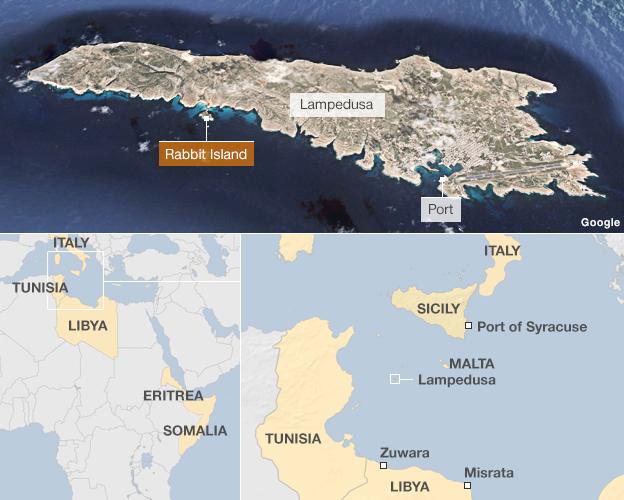Lampedusa boat disaster: Aerial search mounted
- Published
The BBC's Julian Miglierini says the migrants had almost made it to the coast, sinking just 800m away
The Italian coastguard is using planes and helicopters to spot migrants' bodies around the boat which sank off the island of Lampedusa on Thursday.
Bad weather is hampering divers. So far, 111 bodies have been found, 155 people have been pulled out alive, but more than 200 are said to be in the seas close to the Mediterranean island.
The boat was carrying some 500 people - mostly from Eritrea and Somalia.
Italy says it will amend immigration laws and has called for European help.
The 20m (66ft) vessel began taking on water when its motor stopped working as it neared Lampedusa on Thursday morning, survivors said.
Some of those on board then reportedly set fire to a piece of material to try to attract the attention of passing ships, only to have the fire spread to the rest of the boat.
The boat - which set sail from the Libyan port of Misrata - is thought to have capsized when everyone moved to one side.
Video footage later showed the vessel sitting upright on the seabed some 45m (150ft) below the surface.
The skipper of the boat, a 35-year-old Tunisian, was arrested. It has emerged that he was deported from Italy in April.
'Shame'
Of the bodies recovered so far 58 were men, 49 were women and two were children of one and six years old. Italian officials say there could be more women in the sunken boat than men - among the 155 survivors only four were women.
Divers are hoping to resume the search in the coming hours, officials say.
"Though the bad sea conditions persist, our guys are ready to go down if a window opens up that makes it safe for them," coastguard spokesman Filippo Marini said.
A man from Eritrea is rescued: "You have to search or 480 people are going to die"
The operation had initially focused on an area off Lampedusa called Rabbit Island, but the search was then widened beyond the initial radius of four nautical miles in an effort to recover bodies that had been swept away by tides.
The divers have been describing seeing horrific scenes inside the wreckage.
Key migrant routes to southern Europe
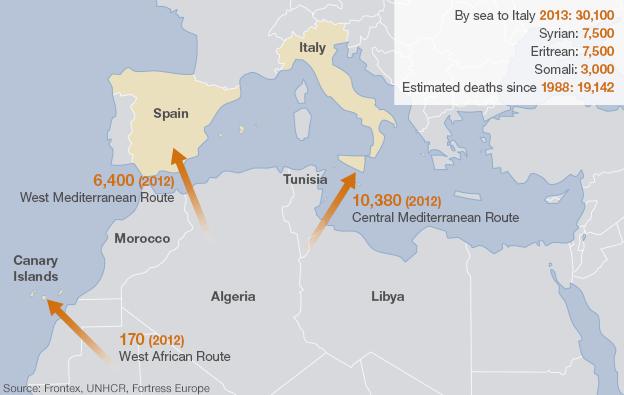
So many bodies have been brought ashore that the island has had to send for more coffins and turn a hangar at the airport into a huge makeshift mortuary.
Libya is attractive for migrants wanting to travel on to Europe, says the BBC's Rana Jawad
An evening mass and silent candlelit procession were held on Lampedusa. Most residents of the island turned out, the BBC's Gavin Hewitt reports from the scene.
People were sombre, but also angry that such tragedies were happening all too often and so little was being done to prevent them, he adds.
Lampedusa Mayor Giusi Nicolini - who wept at the scene - said: "After these deaths, we are expecting something to change. Things cannot stay the same.
"The future of Lampedusa is directly linked to policies on immigration and asylum."
Interior Minister Angelino Alfano has warned there is no reason to think this would be the last disaster of its kind.
Mr Alfano said the divers had seen dozens of bodies in the wreck. "There could be even more in the hold, where the poorest of the poor are usually put," he told parliament.
Gavin Hewitt says that at least 200 migrants are still unaccounted for
Mr Alfano added that this "sense of impotence" explained the anger and prompted Italians to rally around Pope Francis's cry of "shame" - a "collective feeling".
President Giorgio Napolitano has called for "specific policies" on refugees and asylum seekers "which are not regulated by Italian laws".
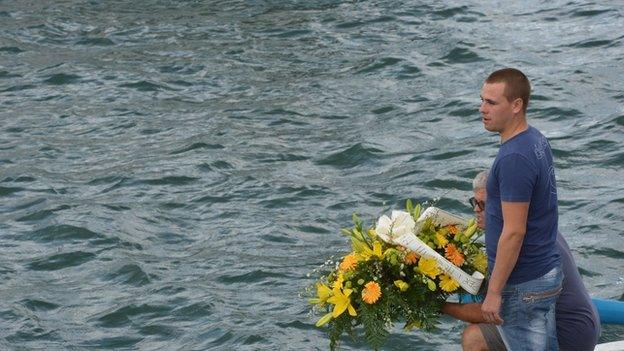
Fishermen cast flowers in the sea near spot where the ship sank on Saturday.
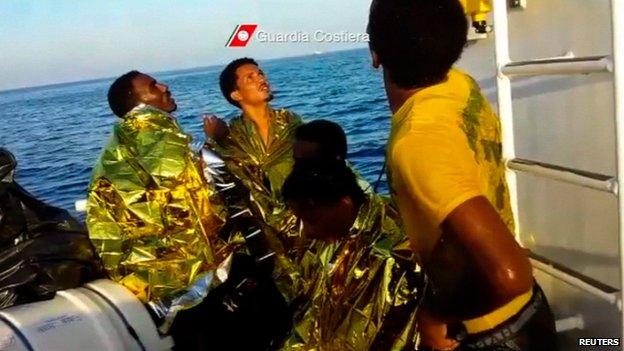
This image released by the Italian coastguard shows some of the migrants who survived the shipwreck.

But their boat lies at the bottom of the sea, along with many bodies of those who did not survive the disaster.
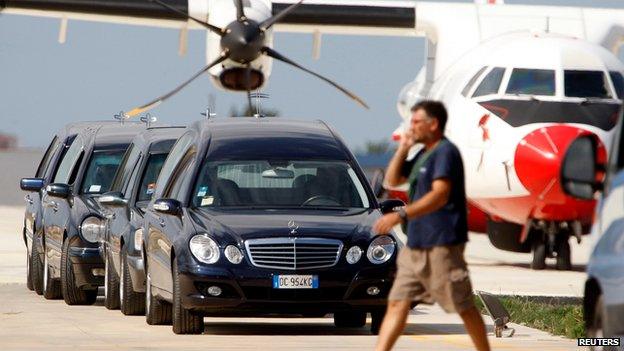
The scale of the tragedy meant a hangar at Lampedusa's airport has had to be turned into a temporary mortuary and more coffins brought on to the island.
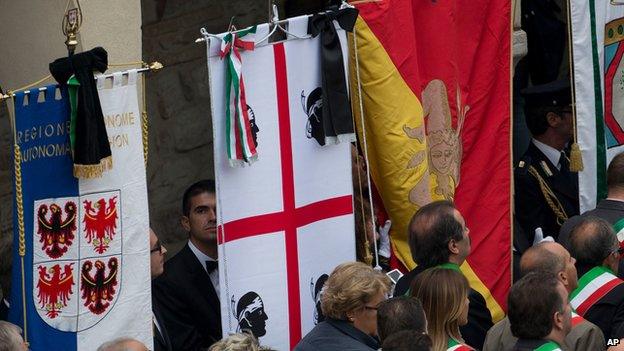
Black ribbons in memory of those who died were tied to banners during a mass by Pope Francis in front of St Francis Basilica in Assisi.
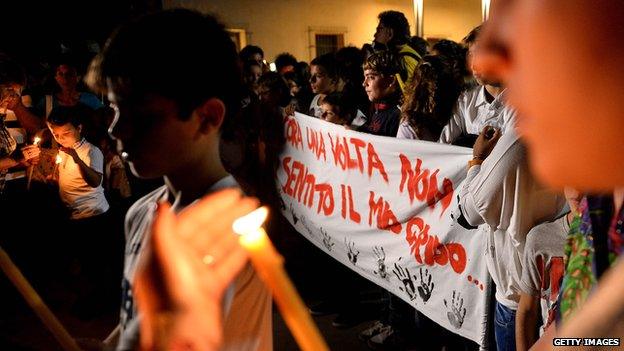
Residents of Lampedusa held a candlelit procession through the streets of the island. One banner read: "Once again you didn't hear me crying."
In a statement, UN High Commissioner for Refugees Antonio Guterres commended the swift action taken by the Italian coastguard to save lives.
Mr Guterres also expressed "dismay at the rising global phenomenon of migrants and people fleeing conflict or persecution and perishing at sea".
The UN said that in recent months, most migrants attempting the crossing were fleeing the conflicts in Syria and the Horn of Africa rather than coming from sub-Saharan Africa.
The number of those arriving by sea to Italy this year until 30 September stood at 30,100, according to the UN.
The main nationalities of those arriving were Syrian (7,500), Eritrean (7,500) and Somali (3,000).
